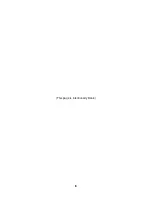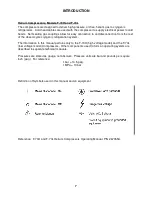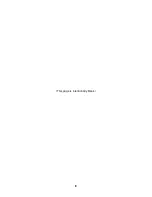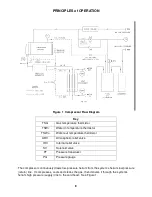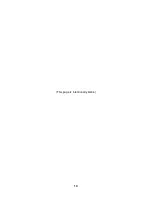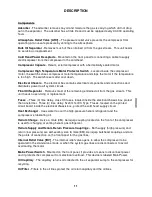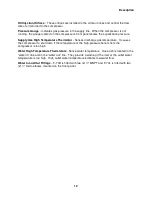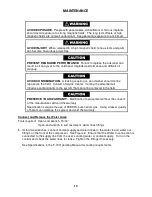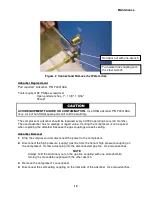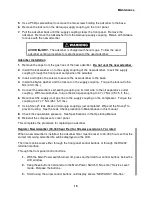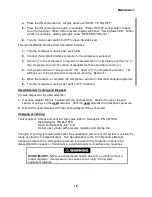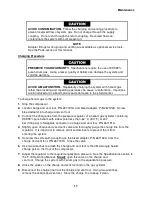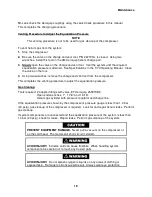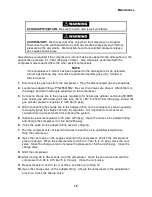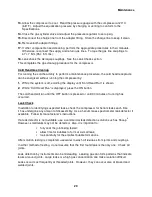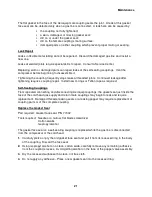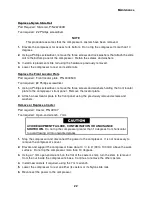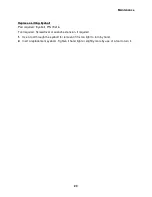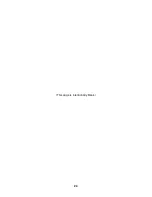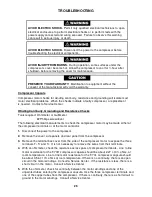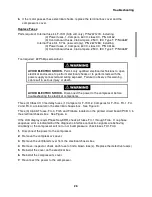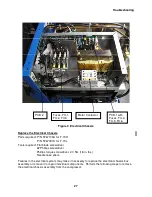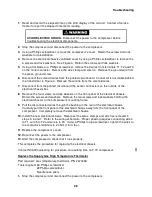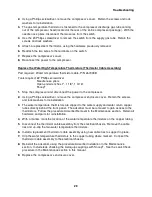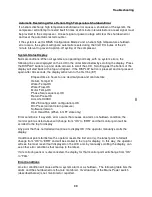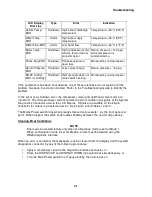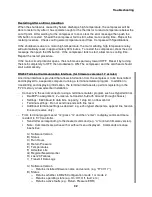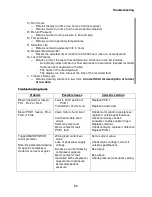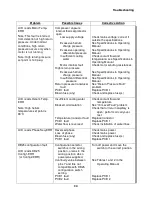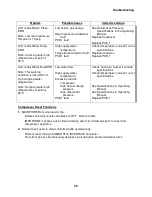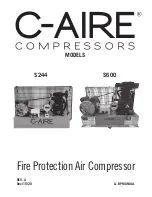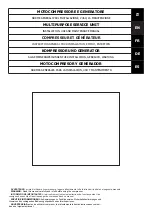
Maintenance
20
13.
Allow the compressor to cool. Read the pressure gauge with the compressor at 20° C
(68° F). Adjust the equalization pressure by charging or venting to conform to the
Specifications.
14.
Close the gas cylinder valve and adjust the pressure regulator to zero psig.
15.
Disconnect the charge line from the adapter fitting. Store the charge line to keep it clean.
16.
Remove both adapter fittings.
17.
If other components need cleaning, perform the appropriate procedures in their manuals.
Otherwise, reconnect the supply and return gas lines. Torque the gas line couplings to
47 ± 7 Nm (35 ± 5 ft. lbs.).
18.
Leak check the Aeroquip couplings. See the Leak Check section.
This completes the gas cleanup procedure for the compressor.
Cold Head Gas Cleanup
For running the cold head only to perform a maintenance procedure, the cold head receptacle
can be energized without running the compressor by:
1.
While the system is off, scrolling the display until “Cold Head Run” is shown
2.
While “Cold Head Run” is displayed, press the ON button.
The cold head will run until the OFF button is pressed or until 30 minutes of running has
occurred.
Leak Check
In addition to identifying suspected leaks, check the compressor for helium leaks each time
it has undergone any amount of disassembly. Use a helium mass spectrometer leak detector if
available. Follow its manufacturer’s instructions.
If a leak detector is not available, use a commercial leak detection solution such as Snoop
®
.
However, small leaks may not be detected. Also, it is important to:
•
fully coat the joint being tested;
•
allow time for bubbles to form at a small leak;
•
look carefully for the smallest bubble formations.
After solution testing is completed, use water to wash all residues from joints and couplings.
In either method of testing, do not assume that the first found leak is the only one. Check all
joints.
Leak detection by instruments can be misleading. Leaking gas can form patterns that indicate
leaks at sound joints. Large leaks or a high gas concentration can make isolation difficult.
Leaks occur most frequently at threaded joints. However, they can occur also at brazed and
welded joints.
Summary of Contents for F-70H
Page 2: ......
Page 8: ...4 This page is intentionally blank...
Page 10: ...6 This page is intentionally blank...
Page 12: ...8 This page is intentionally blank...
Page 14: ...10 This page is intentionally blank...
Page 28: ...24 This page is intentionally blank...
Page 40: ...Troubleshooting 36 Figure 4 F 70H Compressor Wiring Diagram...
Page 41: ...Troubleshooting 37 Figure 5 F 70H Compressor Wiring Schematic...
Page 42: ...Troubleshooting 38 Figure 6 F 70L Compressor Wiring Diagram...
Page 43: ...Troubleshooting 39 Figure 7 F 70L Compressor Wiring Schematic...

